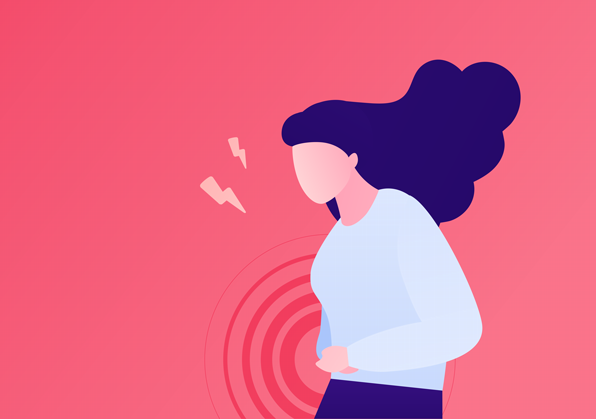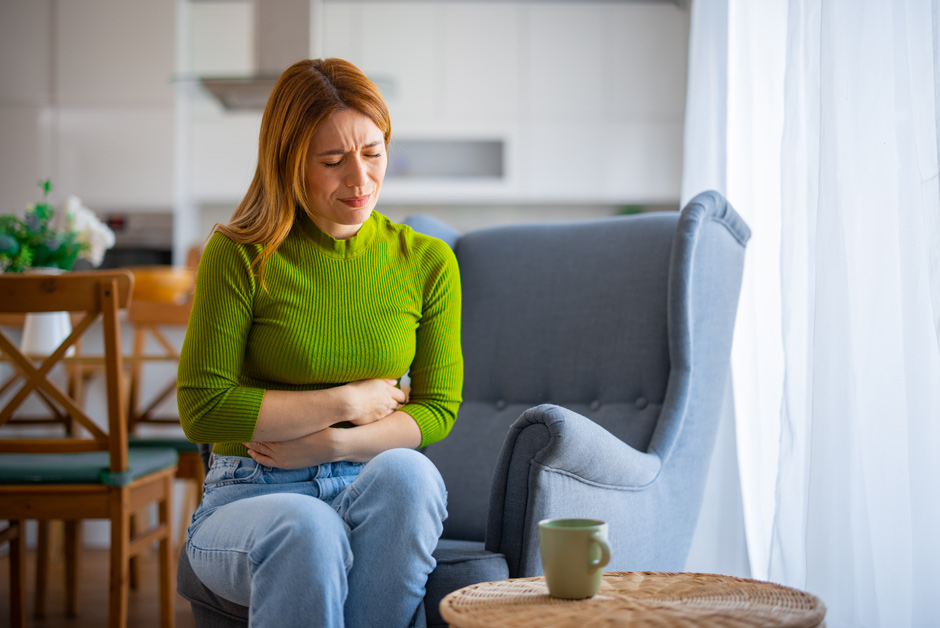Have you experienced unexplained vaginal bleeding, also referred to as irregular bleeding or ‘spotting’? It’s often nothing to be concerned about. However, you should always take note of changes in your cycle, and flag with your doctor or gynaecologist any vaginal bleeding that’s unusual for you, as there is a small chance that it can indicate a problem.
When it comes to irregular and unexplained vaginal bleeding, there are a number of investigations that we can carry out. One of these is a hysteroscopy. Unless you have been examined for irregular bleeding before, you may not be familiar with this term, but there’s no need to be worried – a hysteroscopy is a routine procedure with very little risk, and minor discomfort.
In this post, we will go into more detail about what a hysteroscopy involves, when you might need one, how you can prepare for it, and what happens after the procedure.
What is a hysteroscopy, and do I need one?
A hysteroscopy is an investigation carried out using a hysteroscope: a fine, tube-like device connected to a camera. It is passed through the vagina and the entrance to your womb (cervix), without having to perform invasive surgery (making incisions in the skin). Most women with a womb can undergo a hysteroscopy, with an exception for those who are pregnant.
Dr Mokoonlall, Consultant Gynaecologist at The Gynae Centre, says: “Hysteroscopy allows us to look inside the womb (uterus) to diagnose, and often treat, the causes of abnormal uterine bleeding. In addition, we can investigate symptoms such as pelvic pain and issues around fertility, and diagnose conditions such as fibroids and polyps. Sometimes, vaginal bleeding can be harmless, but getting checked out is the only way to be sure.”
You might be asked to undergo a hysteroscopy if you:
- Are experiencing very heavy bleeding during or between your periods, or after sex
- Are bleeding after going through the menopause
- Are experiencing irregular bleeding while on hormone replacement therapy (HRT)
- Are suspected to have fibroids or polyps
- Have been struggling to get pregnant or have suffered recurrent miscarriages
- Need a coil (intrauterine device (IUD)) removed and the threads are not visible
It’s common to think the worst when faced with an unfamiliar medical procedure. However, if your doctor recommends a hysteroscopy, it does not necessarily mean that you have a serious gynaecological issue. The most common causes of irregular bleeding are hormonal issues; problems with an IUD; Polycystic Ovary Syndrome (PCOS); fibroids and polyps; and Sexually Transmitted Infections (STIs), many of which are easily treated.
If you are experiencing irregular bleeding, you should book a consultation with your gynaecologist as soon as possible. Record your experiences, taking note of how long the bleeding has been happening, how much blood has been lost, if you are in pain and how severe the pain feels, and if you have any other symptoms. This will aid your gynaecologist in their diagnosis.
Is a hysteroscopy procedure painful?
For most women, a hysteroscopy is a procedure that comes with minor discomfort and/or pain. Some may find it uncomfortable and experience period-like pain or cramps. Taking pain relief, such as ibuprofen or paracetamol, an hour or two before the procedure, may help.
However, everyone’s experience of pain is different. If you are worried about pain or have any questions about pain relief, you should voice your concerns to your doctor before your hysteroscopy.
You should also let your doctor know in advance of your procedure if:
- You have painful periods that cause you to faint
- Vaginal exams or cervical smears have been painful for you in the past
- You’ve experienced sexual violence, which could make the procedure difficult for you
In some cases, it may be possible to have a local or general anaesthetic for the procedure. A local anaesthetic injection can be used to numb the entrance to your womb (cervix), while sedation can be used to relax you and send you into a light sleep.
Usually, a hysteroscopy will take somewhere between five and 30 minutes. Your appointment will take longer if you opt for anaesthetic, and you may have to stay at the clinic for 2 hours if you choose the general anaesthetic route.
Is a hysteroscopy major surgery?
The short answer is, no, a hysteroscopy is not major surgery. The slightly longer answer is that, while a hysteroscopy is a low-risk, minor procedure with minimal complications, it is still considered surgery.
Most hysteroscopies are quick, safe, and will be completed without encountering any problems. But as with any procedure, there’s a small possibility of something going wrong.
In rare cases, there is a:
- Risk of infection – this can develop after the procedure but is easily treated with antibiotics
- Risk of perforation – making a small hole in the uterus. This will often heal on its own but sometimes an operation will be needed to repair it
Hysteroscopy procedure
On the day of your hysteroscopy procedure, you can eat and drink as normal and take your usual medication. An hour or so before the procedure, you may want to take painkillers to help prevent discomfort afterwards.
Before the hysteroscopy is performed, you will meet with your doctor to discuss the procedure and ask any questions you have. For most patients, you will be awake during the procedure.
You will lie on your back with your legs supported by stirrups, in a similar position to having a smear test. The hysteroscope will be carefully inserted into your vagina, passed through your cervix, and into your uterus. The camera sends images to a monitor for your gynaecologist to see.
Sometimes a tiny sample of the uterus lining may be removed and sent for further examination. If polyps, fibroids, or small growths are identified, these may also be removed at the same time.
What to expect after a hysteroscopy
Recovery after a hysteroscopy procedure is relatively fast and you can rest in the recovery area until you feel ready to go home. You may feel a little sick, but this will pass quickly.
For a few days/a week following the procedure, it is common to experience some light bleeding or spotting. It is best to use sanitary towels rather than tampons until your next period to reduce the risk of infection. You can manage any period-like pain and cramping with over-the-counter painkillers.
We also recommend:
- Waiting until any bleeding or discomfort has settled before resuming normal physical activities and sex
- Waiting until bleeding has stopped before going swimming
If you have had sedation you will need to stay at the clinic for 2 hours and have someone drive you home and stay with you for at least 24 hours. This is until the effects of the anaesthetic have worn off. Normal activities can then be resumed after 24 to 48 hours.
What to look out for at home
Please contact us or your GP if you experience any of these symptoms:
- Severe pain not helped by regular painkillers
- Bleeding that gets worse or doesn’t stop after a few days
- Passing bright red blood or large clots
- Foul-smelling vaginal discharge
- A high temperature/fever
These can be symptoms of a post-surgery infection, which would require further treatment – usually antibiotics. If you feel particularly unwell, you should go to your nearest hospital as soon as possible.
Book a consultation for help with unexplained vaginal bleeding
Are you worried about unexplained vaginal bleeding? Or perhaps you’re concerned about unexplained pelvic pain? A hysteroscopy will identify what’s causing your symptoms, and in some cases, treat the problem at the same time.
From the assessment, right through to treatment, The Gynae Centre is here for you every step of the way. Our experienced gynaecologists have extensive experience with the hysteroscopy procedure and you can relax knowing you’ll receive the very best care.
The Gynae Centre is the UK’s leading gynaecology clinic, providing expert care without the wait. To make an appointment to discuss your options for hysteroscopy further, call us on 020 7580 8090 or book online.






